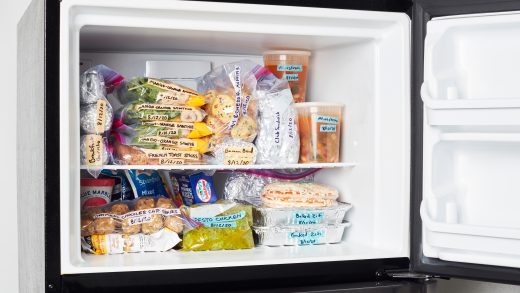In this blog, we talk about cooking and kitchen essentials. Chefs and cooks will agree that one essential is a few really good knives. Knife skills are important in the kitchen. That means you need to learn how to buy, use and care for them.
I know my knife skills are no where near a professional level, But I have learned to chop vegetables and food in general almost as fast as any mechanical chopper. I never use a garlic press, preferring to chop it fine by hand. I can’t do it as fast as those big name chefs that can take apart an onion is less than a minute. And my technique might not always be ideal. But I think I do a pretty good job. I’ve amazed my mother with how fast I can chop and slice even if it’s not that fast.
Types of Knives
When talking about essentials, I think you need at least two different knives, preferably three or four, along with a honing steel. I also recommend a sharpening stone if you want to keep your knives in the best shape. Finding a professional sharpener (person) isn’t as easy these days as it once was.

The two absolutely essential knives you need is a chef’s knife and a paring knife. These represent both ends of the knife scale. A chef’s knife gets its name because it’s pretty much an all purpose knife preferred in the kitchen. The paring knife is small, more maneuverable and used for peeling and light cutting jobs like trimming (or paring).
I think you should also have at least two other knives for special jobs. One is a carving knife. This has a long, slightly flexible blade allowing you to slice a large piece of meat without hacking it to scraps, which might happen with a shorter knife like a chef’s knife. Another is either a boning knife or a fillet knife. Which you choose is mostly up to what kind of food you eat the most. A fillet knife is used mostly for stripping the flesh off the bones of a fish. It has a medium long blade that is thin and very flexible. A boning knife is similar, but the blade is heavier and not so flexible so it can be used to separate joints of meat or poultry.
Other knives that might be useful are:
- bread – usually a long blade with a dull, rounded tip; the edge is serrated so it moves cleanly through the bread.
- butcher – similar to a chef’s knife but with a less sharp tip, not seen much these days but once a staple for American frontier homes.
- cleaver – like a butcher knife, but with a lighter, taller, more square blade capable of more precision handling.
- electric carver – many chefs and cooks swear by these for neat, even cuts of meat and large baked goods; it’s made with two side-by-side blades that move back and forth, essentially doing the work for you; usually the blades are scalloped rather than serrated.
- pizza cutter – a wheel knife on a handle can be useful for cutting many things into serving pieces if they’re not too thick.
- pie – this has a triangular, offset blade that is sharp on one side to both cut and serve cakes, pies and other round, mostly flat foods.
- and specialized knives like those for grapefruit, butter and cheese.
Knives Are Made Of …

There are three basic ways to make good knives. Most common is stamped steel. A large, flat piece of hardened stainless steel is rolled out and then cut with a die, kind of like a cookie cutter but stronger. A handle, usually wood made of two pieces or sides, is then riveted on before the blade is sharpened and finished. Forged steel knives are made of molten steel poured into molds and then shaped using hammers. The handles are usually a part of the whole knife with a comfortable outer layer to make it easier to hold and less likely to slip. These are much more expensive than stamped knives.
In a class by themselves are ceramic knifes, made of zirconia. While these are made of similar stuff as plates or vases, they can be amazingly strong and rarely need sharpening. The edge is actually harder than steel. Also they are less likely to be affected by corrosive substances like acids. However, they are more brittle and can break if dropped on a hard surface. They also cannot be used to cut through bones or pry apart frozen foods.
Know Your Knife’s Parts
All knives, even those made as a single piece, have three basic parts. The blade is pretty obvious, usually sharp on only one edge and can be edged from heel (back, closest to the handle) to tip, which can be sharp and pointed or rounded and dull. The tang is the part of the knife that extends into the handle, which is often a separate but attached piece. At the heel of the blade is the bolster, a sort of hilt or guard to help prevent the hand from running up onto the blade. Some smaller knives, like paring knives, don’t have a bolster.



